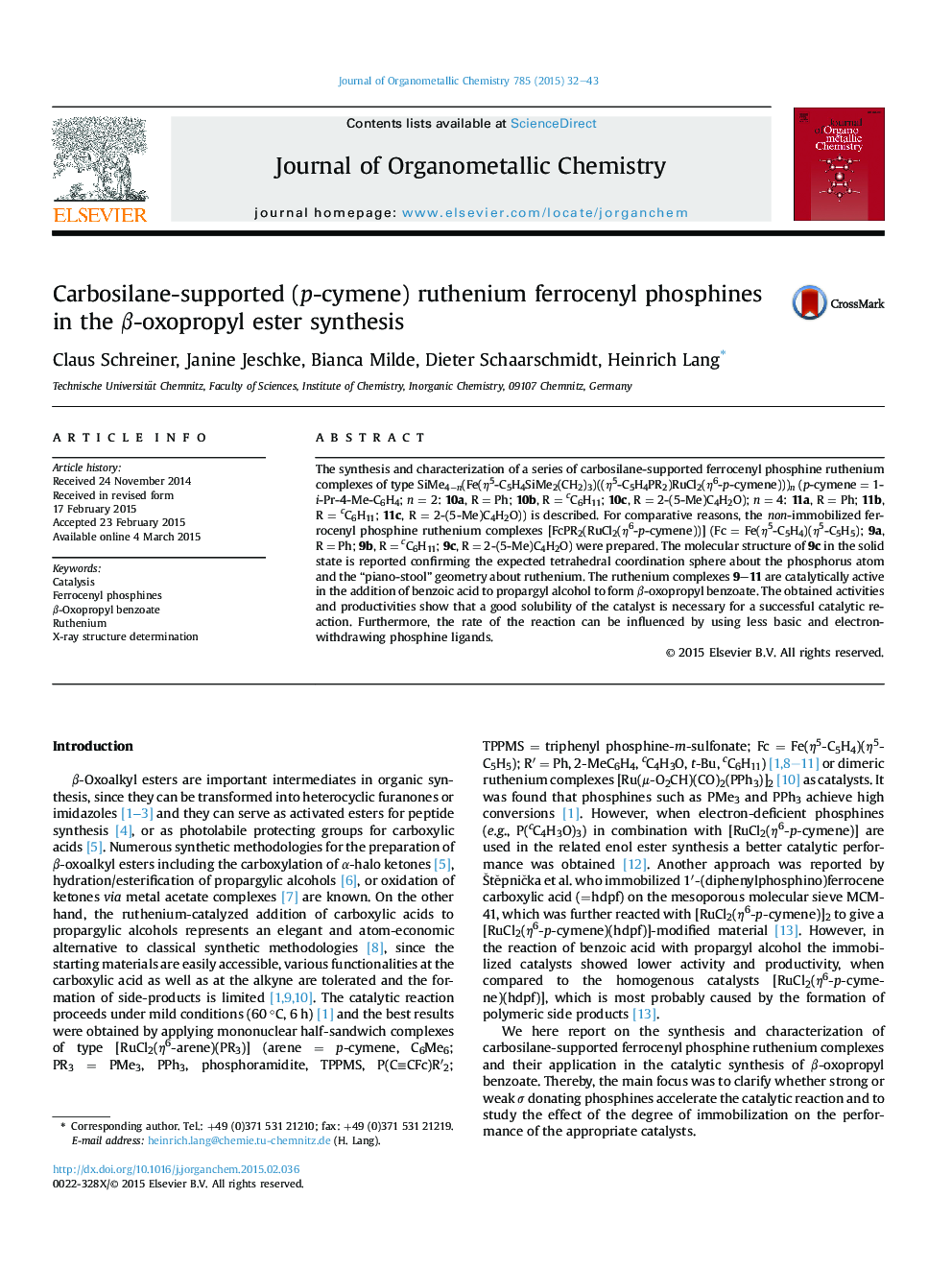| Article ID | Journal | Published Year | Pages | File Type |
|---|---|---|---|---|
| 1320988 | Journal of Organometallic Chemistry | 2015 | 12 Pages |
•Synthesis of a series of novel carbosilane-supported ferrocenyl phosphine ruthenium complexes.•Ruthenium complexes are catalytically active in addition of benzoic acid to propargylic alcohol to give β-oxopropyl benzoate.•Catalysts featuring electron-withdrawing groups enhance the rate of the reaction.
The synthesis and characterization of a series of carbosilane-supported ferrocenyl phosphine ruthenium complexes of type SiMe4−n(Fe(η5-C5H4SiMe2(CH2)3)((η5-C5H4PR2)RuCl2(η6-p-cymene)))n (p-cymene = 1-i-Pr-4-Me-C6H4; n = 2: 10a, R = Ph; 10b, R = cC6H11; 10c, R = 2-(5-Me)C4H2O); n = 4: 11a, R = Ph; 11b, R = cC6H11; 11c, R = 2-(5-Me)C4H2O)) is described. For comparative reasons, the non-immobilized ferrocenyl phosphine ruthenium complexes [FcPR2(RuCl2(η6-p-cymene))] (Fc = Fe(η5-C5H4)(η5-C5H5); 9a, R = Ph; 9b, R = cC6H11; 9c, R = 2-(5-Me)C4H2O) were prepared. The molecular structure of 9c in the solid state is reported confirming the expected tetrahedral coordination sphere about the phosphorus atom and the “piano-stool” geometry about ruthenium. The ruthenium complexes 9–11 are catalytically active in the addition of benzoic acid to propargyl alcohol to form β-oxopropyl benzoate. The obtained activities and productivities show that a good solubility of the catalyst is necessary for a successful catalytic reaction. Furthermore, the rate of the reaction can be influenced by using less basic and electron-withdrawing phosphine ligands.
Graphical abstractA series of novel carbosilane-supported ferrocenyl phosphine ruthenium complexes were synthesized and successfully applied as catalysts in the formation of β-oxopropyl benzoate by addition of benzoic acid to propargyl alcohol.Figure optionsDownload full-size imageDownload as PowerPoint slide
